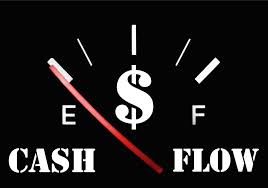I was young and inexperienced, but I was convinced I was unstoppable. I had a lot of energy and motivation. The house was in Arvada, a northwestern suburb of Denver, and I purchased it for a killer price. It was part of a package deal with another house I planned to keep as a rental.

Because I used a hard money loan, I had no money into it and was producing positive cash flow within six weeks. The Arvada house was a different story. That one ended up in my rental portfolio too, but it was far from planned.
It was after I was done with the first project that I started noticing the shady work in Arvada. There was un-permitted work all over the place. There was a small addition that was falling away from the house, material used to build that did not belong, leaks that were covered up, and faulty wiring. The budget was blown before I even started, and I did not have the reserves to cover the extreme amount in overages. I did not know what to do, so I went cheap.

This painful experience taught me many important lessons; don’t go cheap on finishes, what to look for in a budget, and the pitfalls of the refinance. Lending has changed since then, so I reached out to Joe Massey at Castle and Cooke mortgage, our preferred lender in Colorado, to get some help on what issues investors are running into today when they try to refinance their flip.
Here is the list of pitfalls we discussed:
Value: It is nearly impossible to get an appraisal higher than the last list price. In my case, I kept dropping the price, to the point it was listed below what it could have appraised for. When I went for the refinance, the appraisal came in at the last list price, and I was forced to bring cash to closing to get the deal done. Refinance appraisals are based solely on the comparable sales (comps) in the area, as there is no other market indication for the appraiser to reference. Also, the low-quality rehab is hard for an appraiser to put a value on, so it is common for low quality rehabs to have no impact on appraised value. Low quality rehabs do, however, have a big impact on actual value. Once there is MLS exposure, meaning everybody who is looking for a house can see it, the appraiser has actual market information to use to come up with a more accurate value. Think about it, how can the appraiser justify a value higher than what it is listed at in the MLS? You better just count on the value coming in at, or even below, the lowest list price.
Another obstacle with the MLS exposure is with timing. This is not a big deal for most, but is worth a mention. The property must be out of the MLS for at least one day before you can apply for the loan. Again, not a big deal, but this will create a day or two delay in the process.

In the rare case the loan is manually underwritten, the credit on rentals needs to be 620 or higher until you hit your 5th rental, and at that point you will need to have a 720 credit score.
Entities: Conventional lenders will not loan to an LLC or corporation; you will need to own the home in your personal name to qualify. Many lenders will not loan you money if at ANY point you owned the property in an entity.
Most fix and flippers do business in an entity, so you can see how this can cause you a problem with a refinance. All hope is not lost though! Because Joe is a direct to Fannie Mae lender, he is able to finance you while your property is in your entity, but will require that you move it into your personal name. If you hear a lender tell you they cannot help you because you owned your flip in your LLC or corporation, know that there are lenders like Joe out there that can do it.
DTI: You might hear that you cannot finance a rental because your debt to income ratio will be off, meaning you don’t make enough money to support all your debts. The hiccup here is often the rent amount on the new property, and if you can use that to offset the new mortgage payment. Some lenders will want to see the property on your tax returns to give you credit for the income, which is always a loss in the first year you buy a new property and rehab it; therefore making it tougher to qualify. If you get this feedback, call another lender. The guideline here is that you can use 75% of the gross rent amount as income if you have a lease and can show at least one month of rent collected and the security deposit.
Another issue with DTI is self-employed borrowers. I have written full articles on this subject, because many people who are self-employed take as many deductions as possible. When you take a deduction, you lower your taxable income, so you save on taxes. The problem is that when you lower your income, you hurt your DTI, making it harder to qualify for loans. It is not the fact that you are self-employed that is preventing you from getting a loan, it is the income you report. The guideline here is that you can get a loan when you work for yourself if your income supports the debt. Income is documented with two years of tax returns, unless you have been in business for at least five years and have a 740 or higher credit score, in which case you will only need one year of tax returns.

The guideline is a little confusing and is based on the number of properties you own. The reserve requirement is:
6 Months of mortgage payments on the subject property (PITI) plus…
- 2% of unpaid loan balances on your other rental property loans for 1-4 financed properties
- 4% of unpaid loan balances on your other rental property loans for 5-6 financed properties
- 6% of unpaid loan balances on your other rental property loans for 7-10 financed properties
You do not count your primary home mortgage balance in these calculations.
You are able to use some retirement money to meet this requirement, but you will also need money in the bank. Check with your lender if you plan to use retirement money to meet this requirement, and they can walk you through what funds need to be where when you apply. If you start running low on reserves, do what you can to get the house acceptable for an appraisal and then get the loan done. Once the loan is in place, go back and complete anything that you need to complete that will consume your reserves.
Changes in your situation: Several things can create problems here. If you are in the middle of the refinance process, it is probably best that you do not take out any additional credit or even have your credit pulled. You also don’t want to leave your job, which seems obvious, but I feel the need to mention it.
I wish I had this information when I was working on that Arvada house, and I wish I knew someone like Joe to help me through the process.


